In this blog post, I review how I use anticipation guides in my classroom through the development of an anticipation guide template. A quick and easy tool to use at the start of any new topic or unit!

There are many pre-reading or entry activities out there, but my go-to activity for the start of a new core reading or unit is the Anticipation Guide.
These powerhouse tools can be used in any classroom, elementary to high school, and even higher education, English to Science.
What are Anticipation Guides?
Anticipation Guides follow one main principle: get students thinking about upcoming big ideas.
While there are a few different formats, anticipation guides all ask students to read through a few statements and Agree or Disagree with them.
For example:
- As humans, we have an obligation to conserve and protect endangered species.
- Without checks and balances, governments and politicians would oppress their citizens.
- The truth is fixed and cannot change.
These are statements that could appear on an anticipation guide. They are strong and interesting, and people can undoubtedly form an opinion on them. Likely, when reading these, students (and you) already have a quick reaction!
So, the anticipation guide lists these statements and provides an area for students to agree or disagree. It could be as simple as that, but I find this leaves students hanging.
“Why are we doing this?”
Well, if we’re doing this to prepare students for a new topic or text, and the whole purpose is to get them thinking about the big ideas, we need to help them develop and flesh out that thinking more than a quick reaction.
They need to do some more work.
My favorite part of anticipation guides is the explanation. In any anticipation guide I give, there are areas for students to explain their opinion. In fact, I’ve used anticipation guides so much, I’ve developed my own anticipation guide template.
These aspects make up the basics of the anticipation guide.
- Strong, engaging statements
- Place for students to agree or disagree
- Space for students to explain their opinion
How do I make effective Anticipation Guide Template?
Quick reaction to the statements is key. The statements must be approachable. Students should be able to form an opinion without background knowledge.
Sure, maybe you need to explain the statements in different ways when reviewing the directions. Perhaps you need to define a word or term. But beyond a bit of explanation, students should form an opinion and feel confident they understand the idea quickly.
I’m going to use a scenario to see what I mean. Let’s say we’re starting a unit on the Civil Rights Movement and students don’t have much specific knowledge. With this in mind, the following could be problematic anticipation guide statements.
- Cesar Chavez is an overlooked hero of the Civil Rights Movement
- The Civil Rights Movement should have done more to help women achieve equality.
These statements aren’t the greatest because they require students to have some knowledge of the CRM. Although some students may have studied it previously, not all will have done so. If we use these statements, we are causing more work for ourselves, to explain these concepts to students, and we are making what should be a low stakes and highly engaging activity into a high stakes and low engaging activity.
As a result, students will feel uncertain and less interested.
The takeaway about making strong anticipation guides: make the statements approachable for all students.
If you’re wanting to challenge students, such as your high achievers, do so in the explanation section rather than making the statements too complex. Once you’ve got this basic principle in mind, you’re on your way to developing an easy-to-adapt anticipation guide template.

How do I Challenge Students with Anticipation Guides?
Like any other activity, it is always best to craft opportunities for challenge, regardless of students’ varied skill levels.
Anticipation guides are a great way to achieve this difficult balance.
Like mentioned above, anticipation guides are best when they require students to explain their opinion. Be sure to clarify what explaining means.
Students must state why they agree or disagree, give a reason, and provide an example as evidence. In essence, they are drafting a mini-paragraph or essay (really mini, 3-4 sentences).
Students can pull evidentiary examples from anywhere: their life, books, movies or shows, and more. This is an entry activity and we want students engaged, thus we must loosen the expectations for “evidence.” We don’t need academic sources and citations here (although doing so could be a “bonus challenge” you offer). We just need students to care!
By allowing them to use their own life or favorite TV show as an example, they are more likely to buy in. Plus, I’ve had students connect and form bonds over these explanations.
“Hey! I watch that too!”
It’s awesome.
Challenge students by requiring them to pull in evidence, and you can offer bonus challenges like:
- Use academic sources (articles, lectures, literature/textbook)
- Provide citations
- Give more than 1 example as evidence
Once you have these key aspects in mind, you essential have a mental anticipation guide template. Anticipation guides are a tool that can be revised and revamped for each new topic or unit, easy-peasy!
How do I implement Anticipation Guides in the Classroom?
This is the typical flow for anticipation guide templates in my classroom:
- Assign the anticipation guide (pass out paper or release assignment electronically in Classroom, Canvas, etc)
- Review the directions and expectations
- Read through and explain each statement while students mark their initial opinion of Agree or Disagree
Because I work at a school where students each have their own device, I have the luxury of choosing between electronic or paper assignments. Typically, I use an electronic version of anticipation guides, so students can type their explanations, but I also love using paper copies of this activity.
Let me explain: I always have my students discuss the heck out of these statements. They did all this work giving explanation, now they get to share their thinking, in small groups and as a whole class. I’ll discuss this more in a moment.
With paper anticipation guides, it’s a bit easier for me to see who’s on task and who isn’t. And with paper versions, students can have more face-to-face convos, rather than hiding behind their computer screen. Also, with paper, I can make students move about the room and discuss with different people. Oh yes, they hate it initially, but then they get into it.
In general, I ask my students to discuss anything in small groups before starting a whole class discussion. This way they feel more confident in their answers, they have a “warm up.” This is especially important for ELs and students with diverse needs (UDL strategy). Ultimately, I find this strategy suits my pedagogical beliefs. As always, find what works for you and your students.
In groups of 3-4, students discuss their responses statement by statement. With younger ages, I would time their conversation for each statement. I would start with about 2 minutes per statement, which gives each person in the groups 30-35 seconds to share. If I see they need more time or if they ask for it (yes, they actually ask for it!), I give it.
After they discuss all statements in small groups, then we typically choose a few statements as a class to discuss. A smart way to do this would be a survey of some kind, but I’m honestly not that organized for this activity, and I take a vote by counting hands. I ask them to consider their top 3 favorite statements, or the ones that made them the most heated, and then they raise their hand to vote for those ones.
From there, it is an open floor discussion. While there are different modes and models of whole class discussions. For this, I tend to encourage them to practice having a fluid discussion–just jump in. If they cut someone off, they decide who goes first. This doesn’t always go smoothly. There are awkward pauses and silences, or the same students keep talking, but it is a learning process. When needed, I take hands and control the flow of talkers that way.
During distance learning, I utilized digital discussions, like an online forum post. I had to do these all the time during my credential and master’s program–anyone else have to do these? When considering other ways I could have students interact with each other online, besides stilted Zoom breakout rooms or Google Meets conversations, I decided to use the discussion board function on Google Classroom.
Students posted their opinion on 1 statement from the anticipation guide, with further developed reasoning and evidence. Essentially, they posted a paragraph. Then, they responded to two other students’ ideas with thoughtful responses (like it was an academic conversation).
Final Thoughts on Anticipation Guides & Anticipation Guide Template
Ultimately, anticipation guides are a powerhouse tool that are flexible, engaging, and low-stakes for teachers and students. If you don’t already utilize these in your classroom, I hope this post helps inspire you to give them a try.
If you’d like to see an anticipation guide template, check out the ones I’ve made and used with my own students on my shop here or my Teachers Pay Teachers store.
Right now, I have anticipation guide templates pre-made for the following texts:
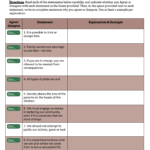
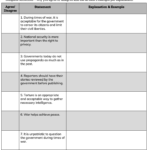
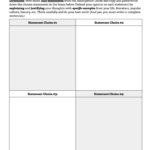
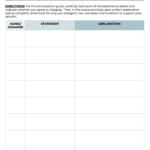
I also have blank anticipation guide templates, so you can just have the structure and fill in your own statements. You can check out the Canva version of this template on my shop, or see the Google doc version on my TPT store.
I’m currently working on a resource filled with tons of anticipation guide statements, so look back at the blog soon for that, or sign up for my newsletters to find out as soon as it’s available.
Happy teaching! 🙂
 Distance Learning: Lessons Learned
Distance Learning: Lessons Learned Student Writing Conferences: A Guide
Student Writing Conferences: A Guide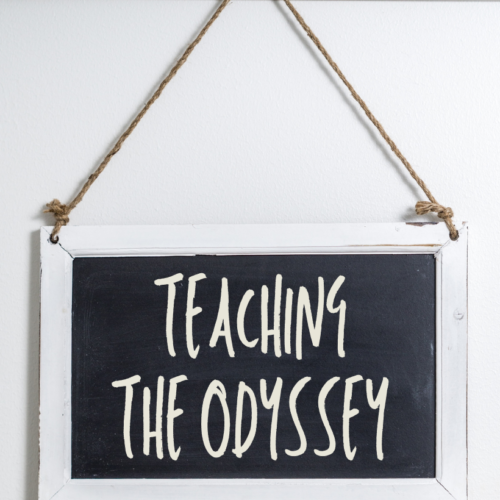 The Odyssey: A Guide to Prepping Students with Pre-Reading Activities
The Odyssey: A Guide to Prepping Students with Pre-Reading Activities